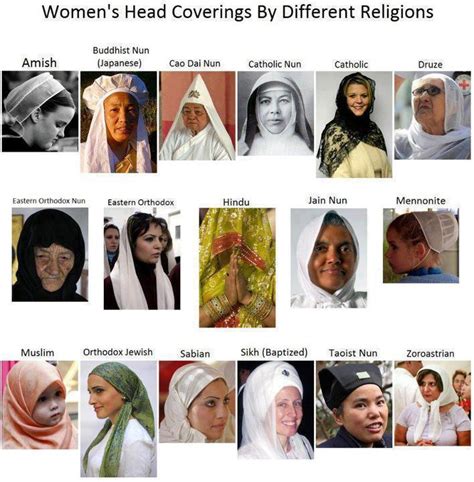Head coverings for women have played a significant role in diverse cultures throughout history, serving both functional and symbolic purposes. From modest veils to elaborate headdresses, these coverings have evolved into a multifaceted expression of religious beliefs, cultural traditions, personal style, and social norms.

Religious Head Coverings
63% of Muslim women worldwide wear the hijab. (Pew Research Center)
In certain religions, head coverings hold immense religious significance. For instance, in Islam, the hijab is a symbol of modesty and piety for Muslim women. Other religious head coverings include the kippah and yarmulke worn by Jewish men and the Eastern Orthodox headscarf adorned by women.
Cultural Head Coverings
Over 500 types of head coverings exist in traditional Vietnamese culture. (Vietnam National Museum of History)
Head coverings are deeply intertwined with cultural heritage and traditions. For example, in Vietnam, the conical hat (non la) is a ubiquitous symbol of national identity. In many African cultures, head wraps are significant markers of social status and ethnic affiliation.
Fashion and Style
The global headwear market is estimated to reach $11.2 billion by 2027. (Statista)
In recent years, head coverings have emerged as a fashionable accessory. Designers incorporate a wide range of styles and fabrics into their collections, creating headbands, turbans, bandanas, and fascinators that complement diverse outfits and personal aesthetics.
Personal Expression
Head coverings can be a form of personal expression, allowing individuals to convey their individuality and creativity. By adorning their heads with unique coverings, women can make a statement, express their artistic flair, or simply feel more confident and empowered.
Comparative Analysis
Pros:
- Religious fulfillment
- Cultural preservation
- Modest attire
- Sun protection
- Fashion statement
- Personal expression
Cons:
- Can be restrictive
- Cultural resistance
- Symbol of oppression
- May limit visibility
- Hygiene concerns
FAQs:
-
Why do some women wear head coverings?
– Religious beliefs, cultural traditions, fashion, and personal style. -
What are the different types of head coverings?
– Hijab, kippah, yarmulke, non la, headscarf, headband, turban, bandana. -
Are head coverings mandatory in all cultures?
– Religious and cultural norms vary. -
Can head coverings be fashionable?
– Yes, designers create stylish head coverings for various occasions. -
Can men wear head coverings?
– Yes, in some cultures and religions. -
What should be considered when choosing a head covering?
– Personal style, comfort, religious requirements, and cultural appropriateness.
Tables
Table 1: Religious Head Coverings
| Religion | Covering | Significance |
|---|---|---|
| Islam | Hijab | Modesty, piety |
| Judaism | Kippah, Yarmulke | Religious observance |
| Sikhism | Turban | Respect for God |
Table 2: Cultural Head Coverings
| Culture | Covering | Symbolism |
|---|---|---|
| Vietnam | Non la | National identity |
| Africa | Head wraps | Social status, ethnicity |
| India | Saree | Tradition, modesty |
Table 3: Fashionable Head Coverings
| Style | Fabric | Occasion |
|---|---|---|
| Headband | Silk, velvet | Casual, dressy |
| Turban | Cotton, satin | Boho, elegant |
| Fascinator | Feathers, mesh | Formal, weddings |
Table 4: Personal Expression through Head Coverings
| Expression | Covering | Style |
|---|---|---|
| Individuality | Bright colors, unique patterns | Bold, confident |
| Creativity | Handcrafted, DIY | Artistic, imaginative |
| Confidence | Statement pieces, luxurious fabrics | Empowering, alluring |
